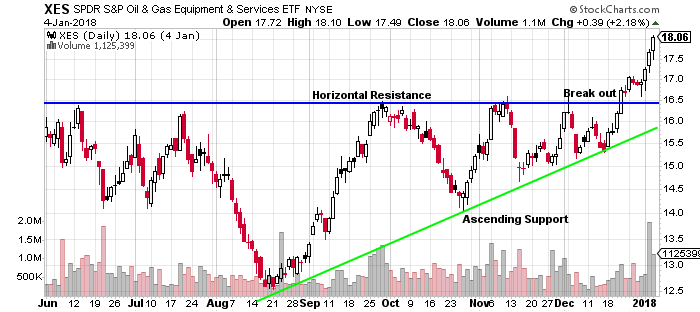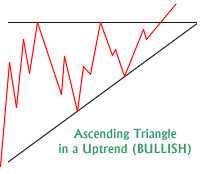Chart Facts:
- The ascending triangle is a bullish chart pattern that usually forms during an uptrend as a continuation pattern.
- Sometimes an ascending triangle pattern will form as a reversal pattern as a downtrend comes to an end, but they are usually continuation patterns in an uptrend.
- Regardless of their location during a trend ascending triangles are bullish patterns that indicate accumulation. The higher lows in the pattern are a clue that sellers are not letting their position go at lower prices as the pattern makes higher lows.
- The top horizontal resistance line on this pattern holds until the sellers are worked through and buyers come in at higher prices, this signals a buy signal for the potential breakout to higher prices and the continuation or the beginning of an uptrend.
- Ascending triangle patterns can be longer in timeframe and wider in range than a flag or a pennant. The length of this pattern can range from a few weeks to months with the average lasting for 1-3 months. Many times the catalyst of earnings will trigger a breakout for a stock.
- Many times volume will contract as the pattern gets near to a breakout. A breakout with higher than average volume can give a higher rate of success for a buy signal.
- Many times a return to the breakout price level will happen as old resistance becomes new support for a second chance entry.
- Traditionally the price projection for this pattern after the breakout is found by measuring the longest distance in the price range of the pattern and projecting after the resistance breakout.
The below $XES chart shows the horizontal trend line that lasted 6 months around the $16.50 area and the ascending trend line of higher lows that started in the middle of August. The large candlestick bullish breakout over resistance carried through for a run to $18 and could go farther. This chart trend could be from the breakout of $16.50 to $20.50 equal for a $4 trend equivalent to the longest range of the triangle from $12 support low to resistance at $16.50.

Chart Courtesy of StockCharts.com
